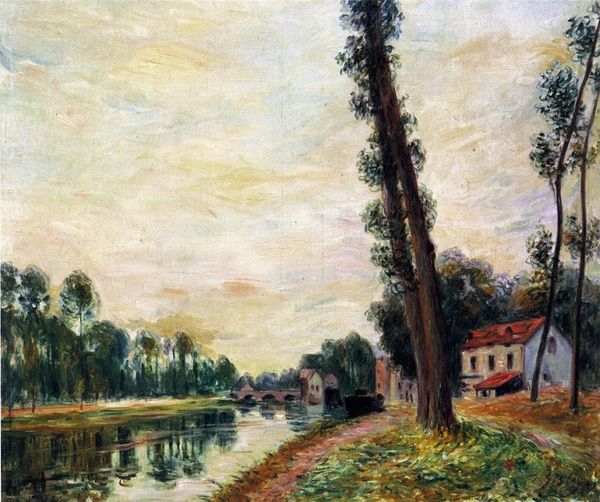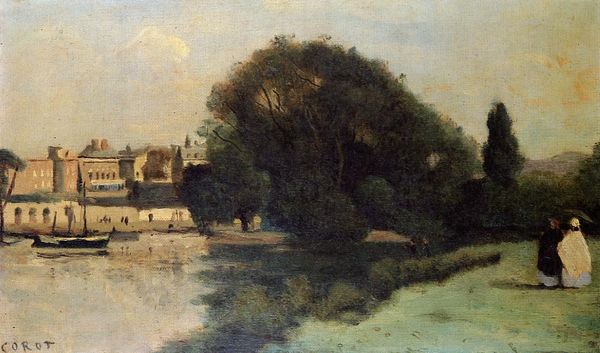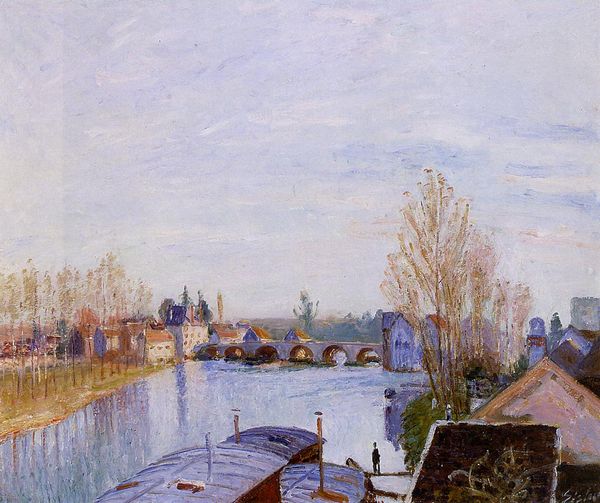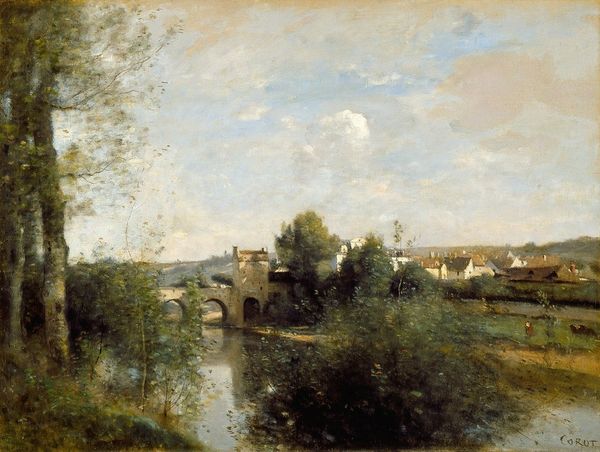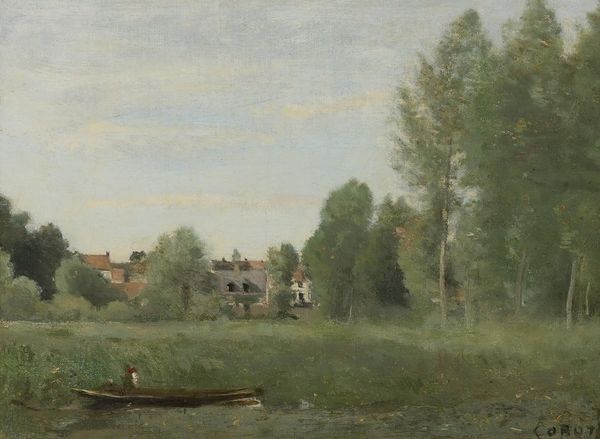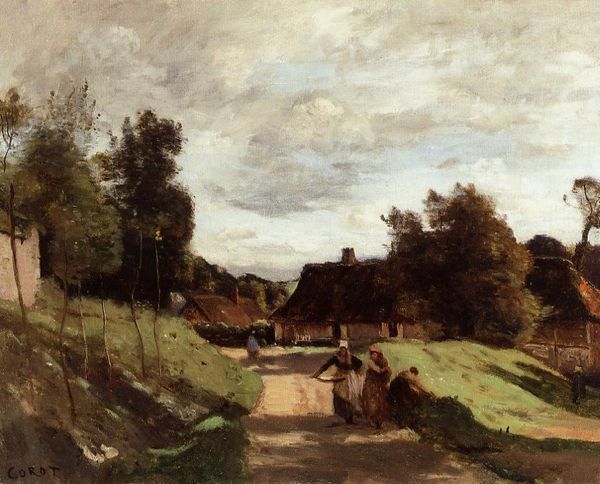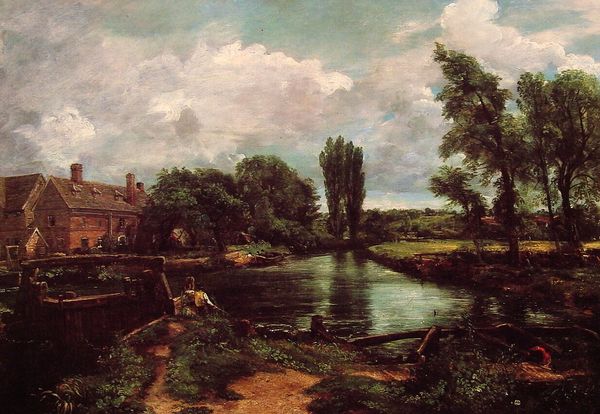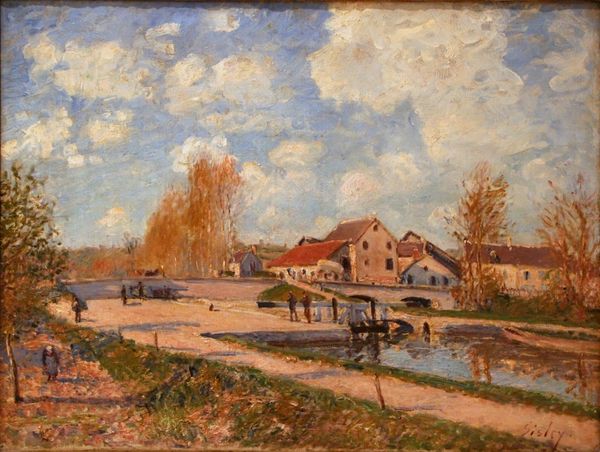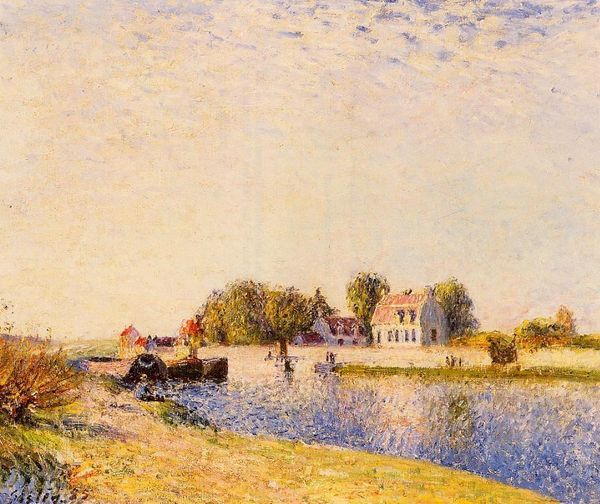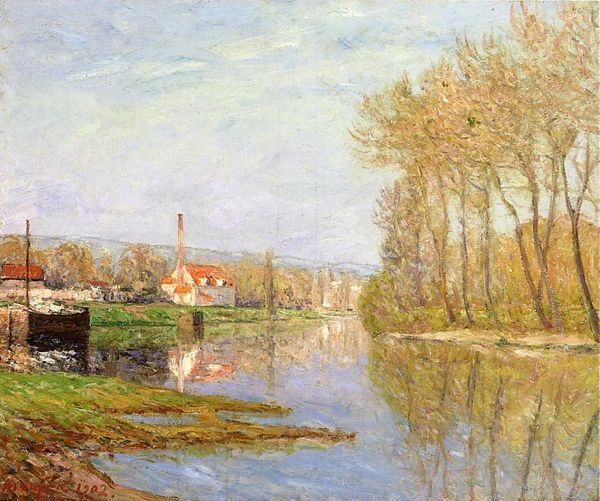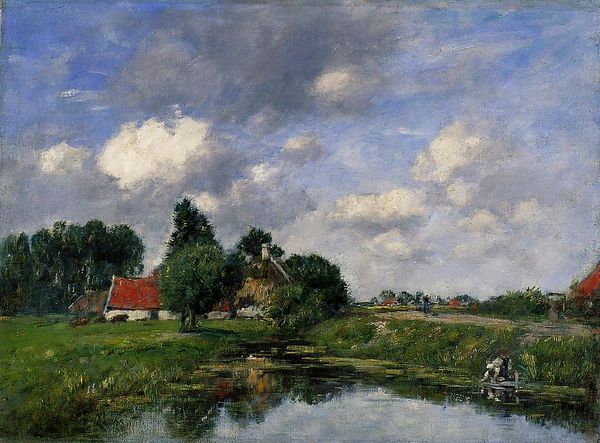
Arleux du Nord, the Drocourt Mill, on the Sensee 1871
0:00
0:00
jeanbaptistecamillecorot
Private Collection
painting, plein-air, oil-paint
#
painting
#
impressionism
#
plein-air
#
oil-paint
#
landscape
#
oil painting
#
genre-painting
Copyright: Public domain
Editor: So this is "Arleux du Nord, the Drocourt Mill, on the Sensee" by Camille Corot, painted in 1871. It’s an oil painting and I'd say it’s mostly landscape. I’m immediately drawn to how serene the whole scene is, everything's softened by this hazy light. What do you see in this piece, looking beyond the tranquil surface? Curator: Well, beyond the serene impression, I see a confluence of enduring symbols. Notice the mill itself. It’s not merely a building, but a symbol of human industry, a claim on nature. But its reflection shimmers, distorted in the water – suggesting perhaps the fleeting, transient nature of such claims. The smoke rising also signifies progress, and I wonder about the tension with its impact to nature’s course and flow? Editor: That's fascinating. The reflection hadn’t struck me that way. So, the figures, do they add to this symbolism? Curator: Absolutely. Observe the figures on the path, rendered with soft, indistinct features. They represent humanity's constant presence and yet, they are somewhat anonymous, universal figures rather than individuals, they’re placed on a transitional path in the liminal space on nature's bank and how humanity connects with it. Corot masterfully evokes the timeless interplay between human activity and the enduring presence of nature. Consider the way the light reflects on the water – mirroring both the sky and the mill. What does that mirroring suggest to you? Editor: I suppose it suggests a connection. Maybe that human endeavor, symbolized by the mill, is inherently linked to the natural world. A unity. Curator: Precisely. It's a beautiful example of how symbols embedded in visual imagery transmit cultural memory. We project our aspirations, fears, and values onto these scenes. We can interpret these familiar shapes and themes throughout history. It is not only painting, it is memory and future simultaneously. Editor: That’s given me so much to think about. I'll never look at a landscape the same way. Curator: And hopefully you won’t. Understanding symbols can alter how we approach other cultural aspects with the same approach.
Comments
No comments
Be the first to comment and join the conversation on the ultimate creative platform.

